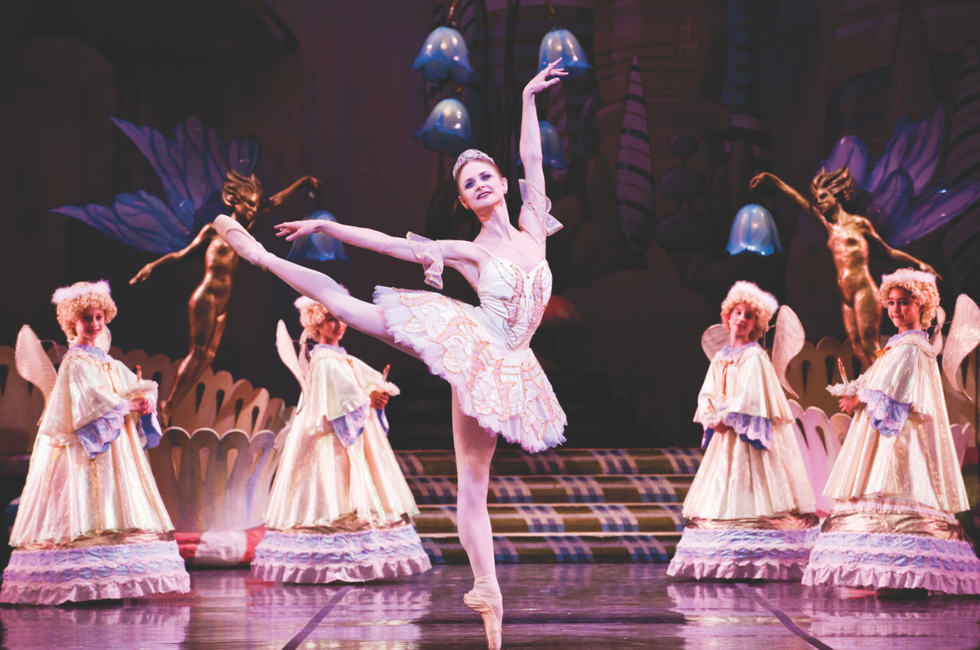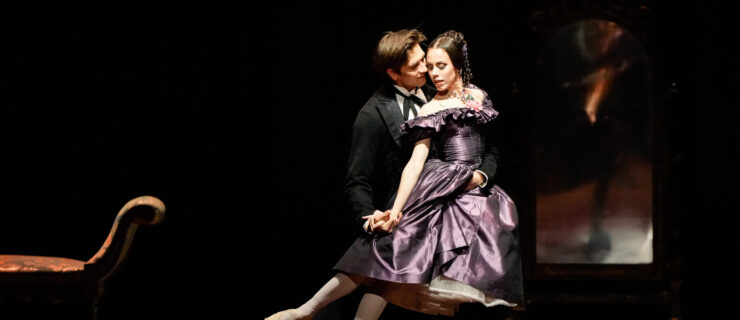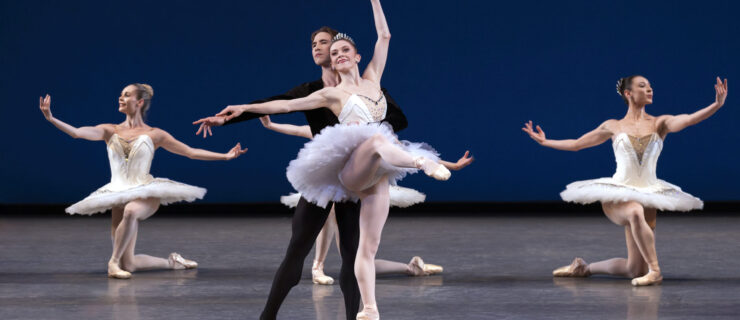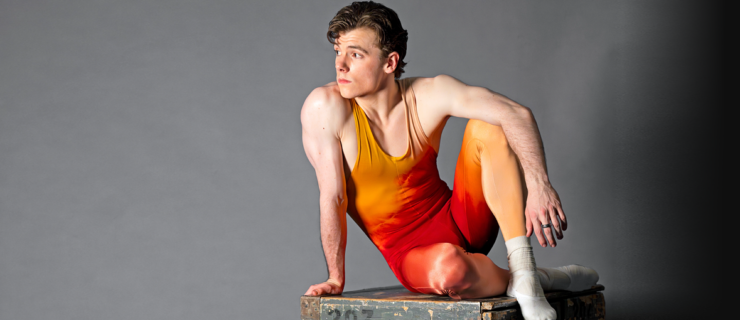Visions—and Variations—of Sugar Plum
Timeless as it may be, The Nutcracker has undergone a number of face-lifts. Yet for all the changes in setting, story and characterizations, the Sugar Plum Fairy variation always looks the same—well, sort of. A loose blueprint of Lev Ivanov’s original choreography serves as a go-to model for almost all Sugar Plums (or adult Claras, who sometimes perform the pas). But just as companies tweak their productions, ballerinas often alter the variation to suit their strengths.
Choreography isn’t the only variable. Sugar Plum can have different motives depending on the production. She could be the regal queen of the Land of Sweets welcoming Clara to her kingdom, a maternal figure teaching her the beauty of love, or Clara herself showing that she has come of age. In addition to overcoming the difficulty of the choreography, it’s up to each dancer to make artistic choices that really bring the steps to life.
Fairy-in-Chief or Ingenue?
Shading your characterization depends on whom you’re trying to portray. In traditional productions, the Sugar Plum Fairy performs the variation. “She’s queen of the Land of Sweets,” says Sandra Brown, who coaches the variation every year as ballet mistress at Colorado Ballet. “She’s very regal and authoritative, so really bend and use your port de bras to show that. Dance with maturity and strength to establish her place in the hierarchy.”
In other productions, the variation serves as a moment for Clara/Marie to enter adulthood. “You want to show her transition from a wide-eyed, naïve child to a mature human being,” Brown says. “Your movements should be grander and more lyrical than earlier in the ballet. Your energy should be more grounded and subtle than that of a giddy child.”
Let Technique Be Your Guide
A common opening begins with a dainty pas de bourée couru in sixth position to tendu devant in plié. With a light relevé, the dancer then beats the working foot in battements battu before lowering back to tendu. Make your movements match the quiet delicacy of the music—and be sure to maintain your rotation. “Because dancers are coming from a parallel position, sometimes they don’t get their tendu as turned out as they should,” says Brown. “Be sure you’re lifted on your supporting side.” The upper body movement is designed to help you shift your weight. “When you’re in tendu, bend and gesture toward that foot with an open palm. But as you relevé, you have to arch slightly back. Then bend your body over the tendu as you come down.”
For the arabesque allongée that follows, Brown again stresses the importance of engaging your turnout. “As you passé through to arabesque, you have to bring the heel of the supporting leg forward. Otherwise, you’ll collapse out of it.”
After repeating the opening step three times, the dancer then travels on the upstage diagonal with a series of piqué battements battu in écarté. “Don’t dance underneath yourself here,” Brown advises. “Really extend your left leg out and piqué onto it.” In most versions, the arms flow gently in the opposite direction of the legs. “The feet are sharp, but you have to soften your port de bras.”
Delicacy and Attack
Another familiar passage midway through can prove especially troublesome. The steps seem simple enough—glissade, piqué first arabesque and pull into retiré en face four times. Yet sometimes dancers struggle to maintain their position and fall off pointe. “To get from arabesque to en face, keep your pelvis lifted to switch your hips without arching your back,” says Brown. She also emphasizes pulling up and out of the supporting leg to maintain your balance. For best results, avoid muddling through the movement. Be sharp to show the precision of your technique—and to accent the music.
Afterward, the choreography can vary. In some versions, the ballerina performs a sustained series of relevés passés. In others, including Colorado Ballet’s, she bourrées backward in either fifth or sixth position with a light, soft port de bras—a perfect moment to add in some characterization. “Anything that will make you feel beautiful,” says Brown. “You can extend one hand, and then the other, roll the hands, and even bring them up to high fifth and turn around yourself.” Think about what your arms might be expressing: Perhaps you’re presenting your kingdom or, if you’re Clara, falling in love. Whatever you are trying to convey, generously bending your torso and keeping your bourrées tight and fast will keep the movement dynamic.
Coming Full Circle
The final manège gives ballerinas another opportunity to apply a personal stamp, with endless possibilities including piqué, step-up and chaîné turns. “Some like to jump,” says Brown. “For instance, one of our Sugar Plums does piqué turns and coupés jetés.”
No matter which combination you choose, you have a dizzying 32 counts to complete it. You’ll probably need to change your spot up to five times, so be strategic with your timing to stay in control. “Don’t switch your spot during one of the harder steps, such as a double step-up pirouette” says Brown. “It’s better to change spots right at the beginning of the next step, whether it’s a single piqué or a soutenu.”
The ending presents a special challenge. From your final set of turns, you need to push through any blurry vision and finish crisply without wobbling. Again, versions vary—some dancers glissade pas de chat to B-plus, for example, or do a double step-up pirouette to fourth or sous-sus. No matter what you choose, deepen your plié before the final step to slow your momentum. “If you do a step-up turn,” says Brown, “really engage your left side. Your turnout will help you put the brakes on.”
The beauty of the Sugar Plum blueprint is that it allows dancers to explore their understanding of the role and show off their strengths. Don’t be afraid to bring the iconic choreography to a completely new level in the Land of Sweets.
EXTRA TIP
Dry winter air mixed with a tiring pas de deux is the perfect recipe for cotton mouth. During your partner’s variation, quickly rehydrate with water backstage. In addition, suck on a cough drop to help remoisten your mouth. Sandra Brown also suggests rubbing a dab of Vaseline on your pearly whites. “Just a pindrop. It prevents your lips from getting stuck on your teeth.”





